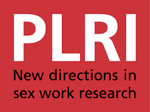An article in the Indian Express by Shruti Nambiar on the 3 May 2011.
Pune: Seventy per cent of women sex workers are not pushed or forced into flesh trade but are drawn to it by the lure of higher income, according to the preliminary result of a survey released by women’s group Akshara.
The preliminary results of the first leg of a pan-India study being conducted by two University of Pune researchers was released on April 30.
The study by Department of Economics researchers Rohini Sahni and V Kalyan Shankar aims at establishing the premise that prostitution is part of an overall informal labour market in the country.
The preliminary results of the survey of 3,000 women and 2,000 men and transgenders engaged in sex work reveal that 70.4 per cent of the women opt for sex work voluntarily and are not coerced into it, and higher income was possibility the primary reason.
“We have been collecting data from 14 states and one Union Territory for the two years now. There have been other such researches relating to the topic, but they are more about ascertaining the number of women engaged in prostitution or in intervention in connection to diseases like HIV-AIDS. There is the usual notion that most sex workers are sold, cheated or forced into sex trade, but that is not true. There definitely is a trafficking racket, but not all women are victims of it. This study wants to challenge the perception that prostitution is not the only option that presents poor women,” said Sahni.
The study has brought to light that unlettered women of low means often enter the unorganised labour market early in life, before moving on to sex work. This busts the notion that prostitution is the last resort of unskilled women. These women, (50% of the women in the survey have had zero schooling), could enter the labour market as early as at the age of six, earning Rs 500-1000 a month as household helps, scrap collectors, petty sellers and so on.
By the time they are 16-19 years of age, they would have had worked for 8-10 years at this meagre income level. Prostitution, which gets them Rs 5,000-Rs 10,000 a month, is comparatively more lucrative.
“It’s a part of the larger choice that women make. Illiterate women are often stuck in labour-intensive work where incomes are sticky, with little incremental benefit over the years. Prostitution helps them earn a premium on their incomes,” said Shankar.
Only part of the first leg of the three-part study has been released. This is the first pan-India research on the continuum in prostitution and the labour market. “The latter parts will deal with sexuality, sexual harassment, stigma, treatment by police and public health services, and other such issues,” said Sahni.
Theme:

